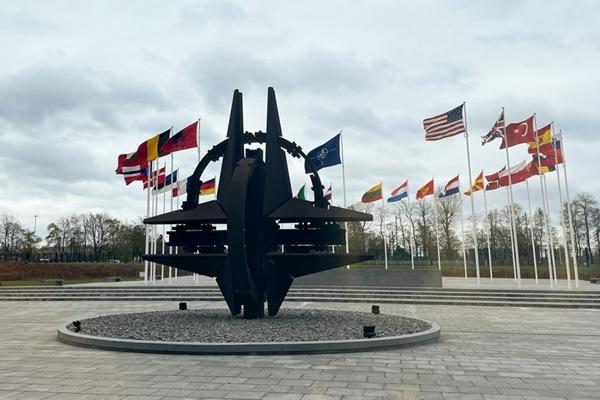

This photo taken on April 6, 2022 shows a sculpture and flags at NATO headquarters in Brussels, Belgium. [Photo/Xinhua]
The North Atlantic
Treaty Organization (NATO), from its origins, was never primarily concerned with aggregating military power; instead, it set out to bind Western Europe to a vast project of a U.S.-led world order, in which American protection served as a lever to obtain concessions on other issues, like trade and monetary policy, said an opinion article published by The New York Times (NYT) on Tuesday.
"In the realm of defense, the alliance was not as advertised," said the article. "For decades, the United States has been the chief provider of weapons, logistics, air bases and battle plans."
As for defense procurement, common standards for interoperability, coupled with the sheer size of the U.S. military-industrial sector and bureaucratic impediments in Brussels, favor American firms at the expense of their European competitors. "The alliance, paradoxically, appears to have weakened allies' ability to defend themselves," it noted.
"Yet the paradox is only superficial. In fact, NATO is working exactly as it was designed by postwar U.S. planners, drawing Europe into a dependency on American power that reduces its room for maneuver," it said.
Far from a costly charity program, NATO secures American influence in Europe on the cheap. U.S. contributions to NATO and other security assistance programs in Europe account for a tiny fraction of the Pentagon's annual budget -- less than 6 percent by a recent estimate, according to the article.
"In Ukraine, the pattern is clear. Washington will provide the military security, and its corporations will benefit from a bonanza of European armament orders, while Europeans will shoulder the cost of postwar reconstruction -- something Germany is better poised to accomplish than the buildup of its military," it added.
